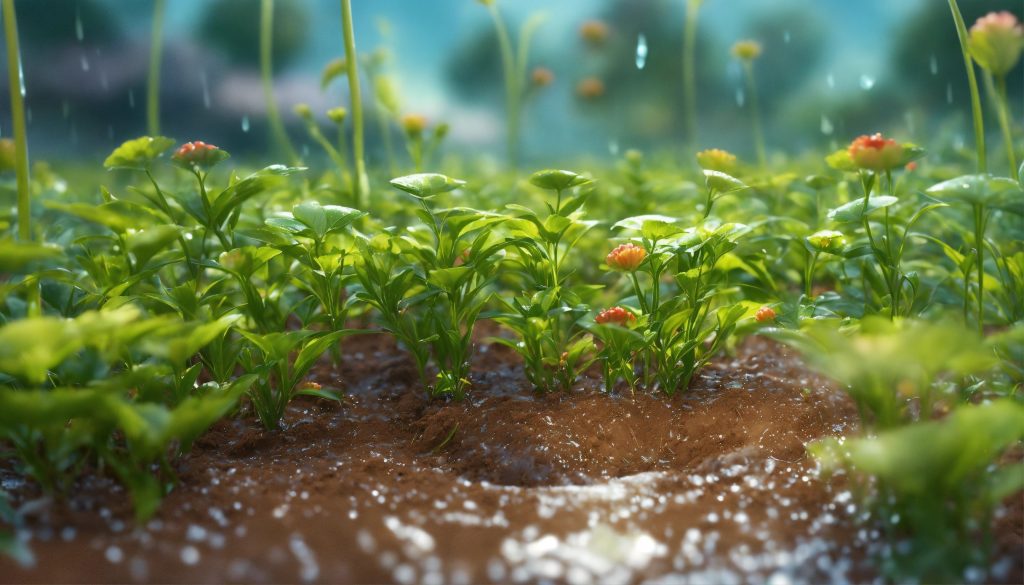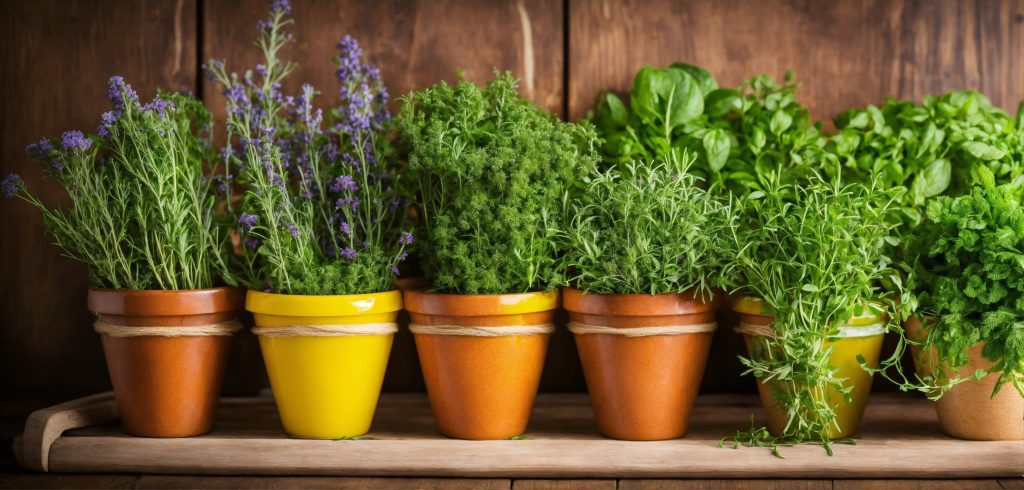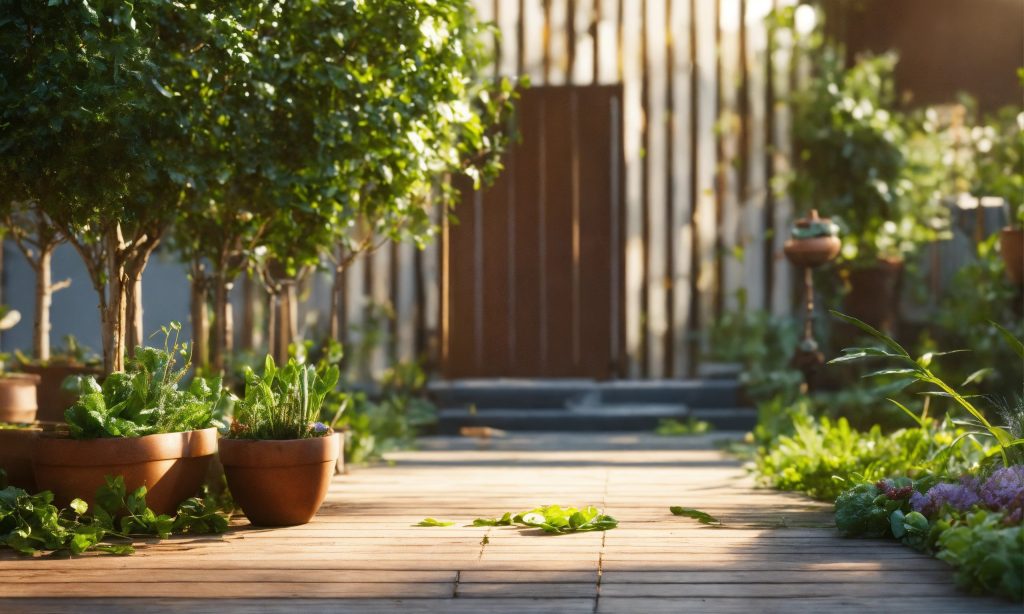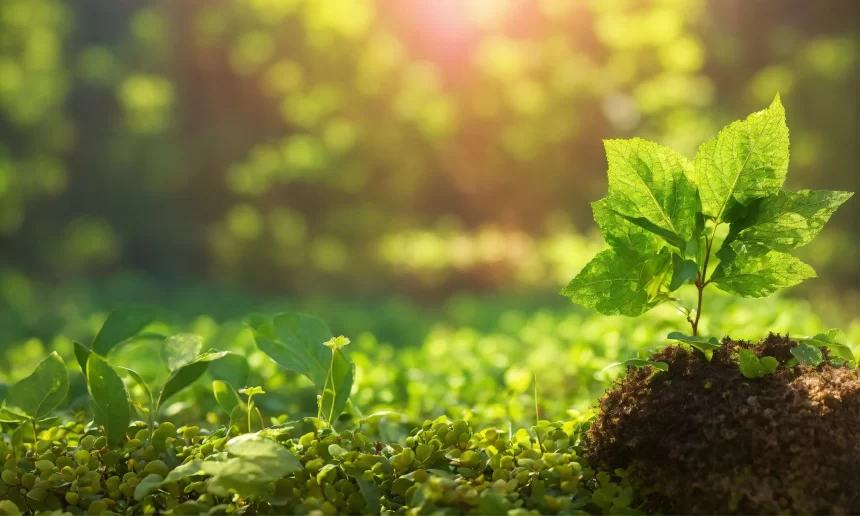Blueberries are a beloved fruit that can be grown successfully in many home gardens. Pairing blueberries with strategic companion plants can maximize space, enhance flavor and boost yields. The right plants near your blueberry bushes can repel pests, attract pollinators, provide shade, add nutrients to the soil, prevent weeds and more. This piece of content will overview ideal companion plants for blueberries and provide tips on building a thriving edible landscape that features these antioxidant-rich berries.
Benefits of Interplanting Blueberries

Interplanting refers to the practice of growing two or more crop species together in the same area. This method takes advantage of the unique relationships plants forge both above and below ground. With thoughtful pairings, the plants can positively influence each other’s health, productivity and flavor.
Here are some of the top advantages of using companion plants with blueberries:
Increased Pollination: Adding flowers near blueberry plants draws in a diversity of pollinators. With more pollinator traffic, the quantity and size of the blueberry crop improves.
Pest Control: Some plants naturally deter specific insect pests that may damage blueberries. Certain flowers also attract predatory insects that prey on blueberry pests.
Weed Prevention: The dense roots, shade and mulch provided by companion plants helps suppress weeds that would otherwise compete with blueberry bushes.
Soil Nutrients: Nitrogen-fixing plants like legumes enrich the soil with nitrogen, a key nutrient blueberries need. Other companions aid nutrient uptake through mycorrhizal associations with blueberry roots.
Space Efficiency: By intermingling multiple edible, ornamental or beneficial plants together, less space is wasted and more ecological niches are filled.
Improved Flavor: Some hypothesize that the close proximity of aromatic herbs and edible flowers may positively influence the intense sweet-tart flavor blueberries develop.
Best Herbs and Flowers to Pair with Blueberries

A wide assortment of flowering herbs, edibles and ornamentals can make excellent blueberry companions. The kinds of plants best suited to grow near blueberries depends on your climate, space constraints and goals.
Here are some top options for herb and flower pairings:
Bee Balm
Bee balm has round, puffy flowers in red, pink, and purple. Bees, butterflies, and hummingbirds love it. It smells a bit like lemons and mint, which might make blueberries taste better. Bee balm can also help keep some harmful things in the soil from hurting the blueberry plants.
Lavender
English lavender (Lavandula angustifolia) is a Mediterranean herb with fragrant purple flowers and needle-like silver foliage. It’s root secretions inhibit the growth of weeds while attracting myriad pollinators. As a low growing bush, it can thrive at the base of blueberry plants.
Basil
Sweet basil has bunches of white or purple flowers that give off a strong smell. It keeps flies, mosquitoes, and other bugs that might bother blueberries away. You can also pick basil leaves all summer long to use in cooking. To get the most leaves, pinch off the flowers.
Borage
Sometimes called “starflower,” borage (Borago officinalis) presents delicate flowers with a cucumber-like flavor. Borage attracts pollinators while also accumulating moisture and shading the soil to deter weeds. The vibrant blue flowers can be used as edible garnishes in summer drinks and salads.
Chives
Chives have pink-purple flowers that both pollinators and gardeners love. The long, thin leaves taste good when cut up and sprinkled on salads, soups, and other dishes. Chives are part of the onion family and might help keep aphids, Japanese beetles, and other pests that can harm blueberries away.
Best Vegetables for Interplanting with Blueberries

In addition to herbs and flowers, certain vegetable species can make excellent companion plants for blueberries. Smart choices tend to be low-growing, shade-tolerant and unlikely to outcompete blueberry bushes for space or nutrients.
Here are prime picks for vegetable pairings:
Strawberries
Garden strawberries (Fragaria × ananassa) thrive under similar conditions as blueberries. The sweet berries ripen in early summer just before most blueberry varieties reach peak season. As a perennial ground cover, strawberries form dense mats that deter weeds and retain soil moisture.
Bush Beans
Compact, upright bush bean cultivars (Phaseolus vulgaris) play well with blueberries. Beans gather nitrogen from the air and deposit it into the soil through a process called nitrogen fixation. Once harvested, the spent bean plants enrich the ground as they break down.
Spinach
Cool weather-loving spinach (Spinacia oleracea) emerges early each spring to form a lush green carpet before most blueberries leaf out. It fills space efficiently, adds organic matter to the soil and can be cut frequently for salads and cooked greens.
Lettuces
Various lettuce (Lactuca sativa) varieties produce loose rosettes of crisp leaves in the spring and fall when blueberry bushes are less bushy. The seasonal greens fill in space during offline seasons and attract beneficial pollinators when flowering.
Garlic & Onions
Although alliums like garlic (Allium sativum) and onions (Allium cepa) won’t thrive in acidic blueberry soil long-term, interplanting the two can still be mutually beneficial. The pungent bulbs deter aphids, Japanese beetles and other pests while scoping space for 1-2 seasons.
Vines and Trees

In addition to herbs, flowers and vegetables, blueberry bushes can be strategically interplanted with larger vegetation. The right shrubs, vines and trees bring benefits like pathogen resistance, nutrient support and weed control when thoughtfully matched.
Top options include:
Elderberry
Both the American elderberry (Sambucus canadensis) and European elderberry (Sambucus nigra) produce edible berries prized for nutrition, flavor and medicinal value. These large shrubs thrive in similar conditions as blueberries and won’t compete for resources. Their flowers boost pollination and fruits ripen after blueberry season.
Cape Gooseberry
Also called goldenberry or Physalis peruviana, this cheerful perennial produces sunny, marble-sized fruits encased in papery husks. The bushes remain compact, fix nitrogen in the soil, attract pollinators and provide some beneficial shade for blueberry plants.
Dwarf Fruit Trees
Compact, grafted fruit trees like dwarf apples, plums, peaches, cherries and Asian pears (all various Prunus and Malus species) can grow well near mature blueberry bushes. The pairing is very space efficient and allows two harvests from the same plot of land.
Grape Vines
Brambly vines of cold hardy grapes (Vitis labrusca) can share space with blueberry shrubs quite amicably. Both crops prefer acidic, well-drained soil and thrive with seasonal pruning. Plus grapevines tend to deter Japanese beetles that can defoliate blueberry leaves.
Nitrogen-Fixing Trees
Trees like black locust (Robinia pseudoacacia), alder (Alnus spp.) and autumn olive (Elaeagnus umbellata) gather nitrogen from the air and feed it to neighboring plants through their roots. This mutually beneficial relationship with soil microbes enriches the entire garden ecosystem.
Designing a Robust Blueberry Patch

When designing a garden layout featuring blueberries, consider the mature size of your plants, spacing needs and the complementary vegetation you hope to integrate. Whether planting a hedgerow, raised bed, container display or incorporated border, here are some key tips:
Space blueberry plants 3-5 feet apart depending on variety. This prevents overcrowding of mature bushes down the road. Surround blueberries with flowering companions that tolerate acidic, sandy soil. Prioritize bee-friendly blooms.
Situate taller species like shrubs, vines or trees just outside the blueberry root zone to avoid nutrient competition. Use low-growing herbs, flowers, greens and ground covers to fill spaces under and between blueberry plants.
Amend native soil with pine needles, bark chips or sulfur to lower pH into blueberry-friendly zone between 4.5-5. Group early, mid and late-season blueberry varieties together to extend harvests from early summer through early fall. Prune bushes annually to improve air circulation and light penetration for partners. Target overly dense tangles and inward growth.
Caring for Companion Plantings

To help companion plants and blueberry bushes thrive together, be sure to provide adequate water, nutrition and pest management. Here are some core care tips:
- Water 1-2 inches per week from rain or irrigation during summer and times of drought. Soak soil slowly and deeply. Blueberries and most companions prefer consistent moisture.
- Apply 2-4 inches of mulch like bark chips, pine straw or shredded leaves around plants to retain moisture and nourish soil biology. Refresh mulch layers annually.
- Prune out dead wood from blueberry bushes in late winter. Cut back tall herbs and flowers after peak flowering to keep growth in check.
- Test soil pH annually and amend as needed to maintain acidic levels blueberries require. Sulfur, coffee grounds, sawdust and pine needles can help lower pH.
- Scout for common berry pests like spotted wing drosophila, blueberry maggots, mummy berry and more. Trap, pick off or apply organic treatments promptly when found.
- Weed by hand frequently to eliminate competition, especially while plants are young and establishing. Mulch and dense plantings will help suppress weeds over time.
The on-going care tasks of watering, mulching, pruning, pH amendment, pest control and weeding are essential for keeping blueberries and companion plants healthy and productive year after year. Investing time into proper care will allow your edible landscape to thrive.
FAQs
Some of the best companion plants for blueberries include flowers and herbs like lavender, bee balm, basil, borage and chives. Vegetables like strawberries, bush beans, spinach, lettuce, garlic and onions are also excellent pairings.
Companion plants help blueberry bushes in numerous ways, like attracting more pollinators, deterring pests through aroma or deceit, enriching soil nutrients, regulating moisture, preventing weeds and efficiently using space.
Many fragrant herbs like lavender, basil, oregano, thyme, sage, bee balm, lemon balm and more grow happily alongside blueberries. Their flowers entice pollinators while aromatic oils can mask blueberry bushes from pests.
Great vegetable companions for blueberries include shallow rooted plants like spinach, lettuce, peppers, onions, garlic, carrots, beans, peas, tomatoes and Swiss chard. Taking care not to overshadow blueberry bushes, these crops can fill open niches.
Yes, prune blueberry bushes annually in late winter by cutting out dead wood and excess old canes to shape plants. Pruning improves air flow and sunlight exposure. It also keeps bushes manageable when interplanted with lower growing companion plants.
Final Thoughts
The diverse flowering herbs, vegetables, vines and shrubs that thrive near blueberries can transform a basic berry patch into a vibrant, edible landscape. By mimicking natural plant communities, companion planting intensifies biodiversity and strengthens the resiliency of each crop. With a thoughtfully designed garden featuring blueberry bushes as a focal point, you’ll enjoy harvests of lush berries for years while supporting broader ecosystem health.




